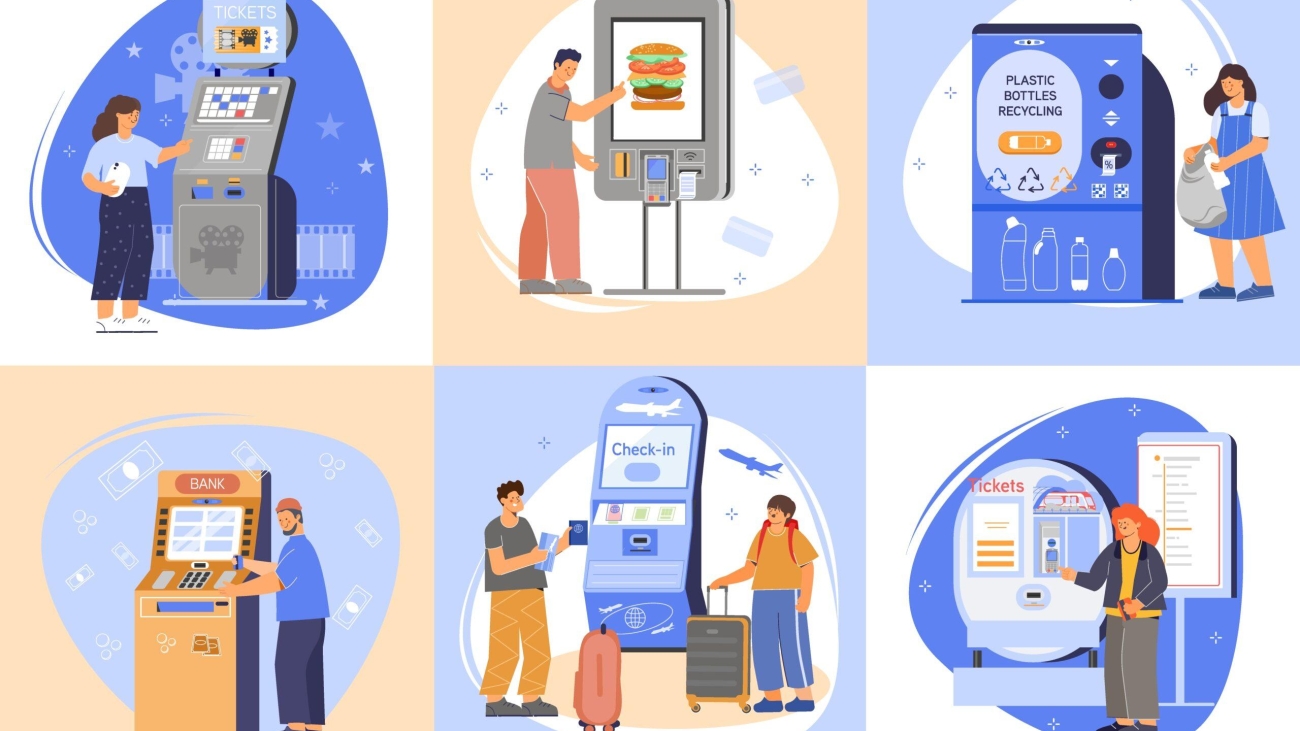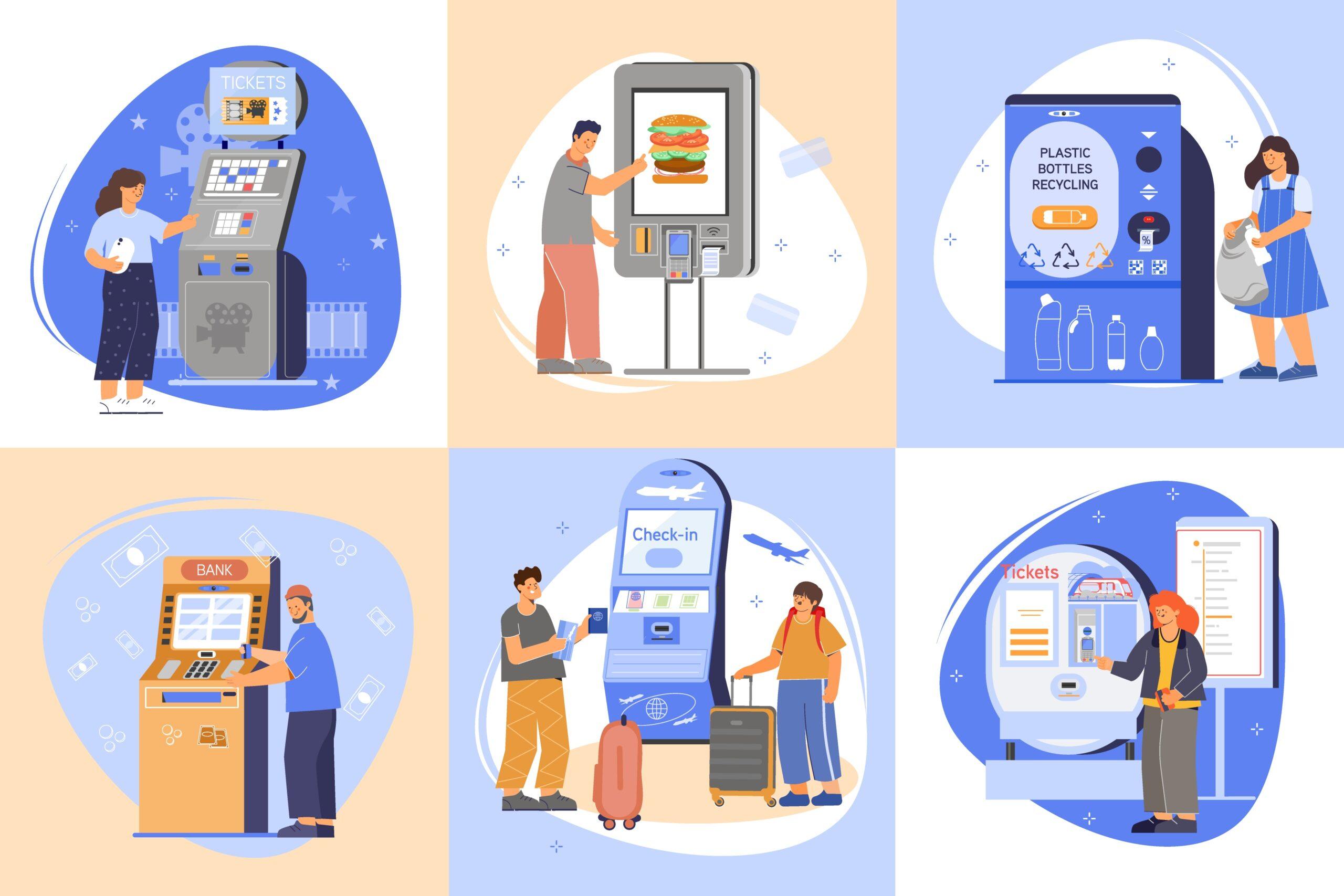Are you in search of effective strategies to elevate your business’s customer experience and expedite service delivery? It’s an undeniable fact that customer satisfaction forms the bedrock of a thriving and enduring enterprise. In today’s increasingly competitive landscape, numerous businesses provide comparable services, and customers now prioritize swift, hassle-free service without compromising on quality.
To maintain a competitive edge, businesses must ensure flawless customer service and unparalleled quality. The secret to achieving an exceptional customer experience lies in the proficient allocation of resources and the incorporation of cutting-edge automation technologies. Self-service kiosks, a hallmark of modern business innovation, stand as a superb method to streamline your operational processes, amplify your profitability, and offer top-tier customer experiences. These kiosks are designed to cater to a wide range of industries, including retail, hospitality, and healthcare, enabling a seamless and self-guided interaction between customers and your services, resulting in increased efficiency and customer satisfaction. Embracing the potential of self-service kiosks is a testament to your commitment to meeting the ever-evolving demands of the modern consumer, thereby fostering a lasting and prosperous business relationship.
What Are Self-Service Kiosks?
Self-service kiosks represent cutting-edge, interactive touch-screen devices strategically deployed by businesses at fixed locations within their establishments to cater to a wide array of customer needs. These versatile kiosks empower customers to perform an assortment of tasks independently, whether it’s accessing critical process information or engaging in activities such as making reservations, placing orders, and completing forms.
The concept of ‘self-service’ is by no means a recent development, yet modern digital interactive kiosks are meticulously designed to offer a highly intuitive and user-friendly experience. Their easy-to-navigate interfaces allow customers to carry out tasks autonomously, affording them a level of privacy and discretion they might not enjoy when dealing with on-site personnel or executives. With self-service kiosks, customers can interact with your business efficiently, securely, and conveniently, making it a win-win solution for both customers and businesses aiming to enhance their operational efficiency and customer satisfaction.
How Do Businesses Benefit From the Self-Service Kiosks?
In accordance with a recent report, the worldwide interactive kiosk market is on a trajectory to attain a staggering valuation of 21.42 billion by the year 2027. This meteoric rise underscores the global adoption of self-service kiosks by businesses across diverse industries. These businesses are leveraging the potential of self-service kiosks in various innovative forms, including self-checkout stations, intelligent vending machines, ticketing booths, and information desks, among others. The primary objective behind this widespread implementation is to streamline their operations and heighten the overall customer experience.
Now, let’s delve into the key advantages that businesses can derive from integrating self-service kiosks into their operations:
1. Better Use of Resources
One of the paramount advantages of employing self-service kiosks is the alleviation of work pressure on on-site staff, who would otherwise be tasked with tending to customers. This cost-effective solution obviates the necessity for businesses to deploy an extensive workforce for the sole purpose of welcoming and assisting customers. Self-service kiosks excel in expediting and enhancing visitor management, granting employees the opportunity to focus on more critical and demanding tasks, ultimately contributing to improved operational efficiency.
2. Improved Customer Experience
Businesses commonly grapple with the predicament of potential customers arriving at their premises, only to be deterred by the sight of lengthy queues, resulting in lost opportunities. Self-service kiosks serve as an effective antidote to this issue, helping to mitigate prolonged wait times and bolster the overall customer experience. Customers are afforded the convenience of bypassing arduous queues, instead opting for seamless interaction with self-serve kiosks, ensuring the swift and precise delivery of services while preserving their privacy. These pivotal factors are instrumental in elevating the customer experience and nurturing customer loyalty, solidifying their ongoing engagement with your business.
3 Scalability
In the ever-evolving landscape of corporate trends, businesses are presented with the opportunity to swiftly embrace the latest digital innovations. Whether it involves transitioning to online platforms for streamlined transactions, form submissions, or the seamless acceptance of instant digital payments, self-service kiosks serve as a dynamic solution to automate multifaceted activities. The strategic integration of interactive kiosks provides businesses with the flexibility and scalability needed to effectively digitize routine tasks while staying attuned to the most current trends, ensuring they remain agile and adaptable in an ever-changing market.
4. Remote Management
Self-service kiosks effectively eliminate the requirement for continuous on-site staffing at service counters, liberating businesses from the need to have employees stationed there to assist customers. By seamlessly integrating self-serve kiosks with robust software solutions such as Mobile Device Management (MDM), organizations gain the capability to manage kiosk operations, updates, and configurations remotely. Whether these interactive kiosks necessitate a software upgrade or encounter technical glitches, the IT administrators can remotely oversee operations and troubleshoot problems. This not only conserves valuable time but also curtails the necessity for frequent physical site visits by IT personnel, expediting the overall process of kiosk device management.
5. Improved Profitability
Incorporating interactive kiosks into customer management strategies is a game-changer for companies, yielding substantial cost savings as they circumvent the need for a sizable workforce. This negates the necessity for extensive employee training focused on customer interactions, freeing up valuable human resources for more intricate and pivotal roles within the organization. The remarkable automation capabilities of self-serve kiosks significantly reduce operational and overhead expenses, providing a cost-effective alternative. Moreover, as self-serve kiosks optimize service delivery in terms of both speed and accuracy, businesses stand to gain momentum with an expanding customer base and heightened revenue generation.
6. Greater Efficiency
When your customer service hinges solely on your staff, numerous impediments can arise. Even a single day of reduced manpower due to sickness, vacations, or extended breaks can lead to missed opportunities and a loss of customers. Self-service kiosks, on the other hand, offer a solution for ensuring consistent service with unwavering accuracy, irrespective of the time of day. Digital kiosks facilitate high throughput, accomplishing tasks efficiently and expeditiously, thereby bolstering your business’s capacity to serve customers seamlessly, no matter the circumstances.
Industries That Use Self-Service Kiosks
Self-service kiosks are versatile systems that find applications across nearly every major industrial sector, revolutionizing the landscape of customer service. Here are some of the top industries that actively employ self-service kiosks:
1. BFSI
Self-service kiosks play a pivotal role in the banking and financial sectors. Banks strategically deploy numerous digital self-serve kiosks to offer customers an avenue to circumvent lengthy wait times and carry out a variety of financial transactions. Customers can conveniently use these kiosks to withdraw or deposit money, cash checks, obtain printouts, complete loan applications, open new accounts, and much more. Furthermore, many finance and insurance companies empower their customers to check account balances, change PINs, or engage in secure online banking, all while preserving their privacy without the necessity of in-person interactions with on-site staff. This not only enhances the efficiency and convenience of financial services but also bolsters the security and autonomy of customers in their financial dealings.
2. Healthcare
In contemporary healthcare facilities, such as hospitals and medical centers, the adoption of self-service kiosks has become increasingly prevalent. These kiosks provide patients with the ability to access vital information, schedule appointments, retrieve test results, and make online payments, among other services. This not only significantly reduces patient waiting times but also lightens the workload on hospital staff, allowing them to allocate their time more efficiently. Moreover, hospitals can extend their digital kiosk offerings to include internet kiosks or intelligent medicine dispensers, providing patients with immediate and autonomous access to the assistance and resources they require, further enhancing the overall healthcare experience.
3. Travel & Hospitality
The use of digital kiosks in the hospitality industry is far from novel. In fact, these interactive kiosks have become a ubiquitous sight in hotel lobbies, fast-food chains, restaurants, hotels, airports, movie theaters, and more. Their primary objective is to provide customers with prompt assistance and streamline various processes. Within this dynamic landscape, individuals can effortlessly make restaurant table reservations, secure hotel room bookings, facilitate self-check-ins and checkouts, handpick preferred seats at the movie theater, reserve flights and promptly obtain tickets, and even execute hassle-free online payments for all these activities via a single self-service kiosk. This multifaceted approach not only enhances the customer experience but also optimizes operational efficiency for businesses in the hospitality sector.
4. Retail
The era of requiring face-to-face interactions with retail associates for product selection is a thing of the past. Today, retail stores, shopping malls, and consumer outlets have embraced interactive kiosks to provide customers with a multitude of services. These versatile kiosks aid customers in navigating sprawling shopping centers, pre-ordering products that are soon to hit the market, enjoying photo booth sessions with friends and family, and effortlessly redeeming discount coupons. The retail sector has harnessed the power of self-help kiosks to elevate the in-store customer experience, ensuring that patrons can independently access the services and information they need with ease and convenience.
Digitos Kiosk Mode for Businesses
In today’s competitive business environment, the combination of exceptional customer service and high product quality is the recipe for success. Enterprises worldwide are embracing the implementation of self-service kiosks to enhance productivity, streamline processes, and simplify the overall customer experience. However, effective management of these digital devices is of paramount importance, regardless of the diverse business requirements they serve. This is where a robust Kiosk Device Management platform, such as Digitos MDM, comes into play.
Digitos MDM is a comprehensive Kiosk Software solution that empowers businesses to not only consistently manage and monitor their unattended digital kiosks but also transform off-the-shelf digital devices, including smartphones and tablets, into dedicated kiosks. This strategic approach allows businesses to achieve substantial cost savings by eliminating the need to invest in specialized kiosk devices. Instead, they can leverage the single-app kiosk mode, accessible through the Digitos dashboard, to lock their digital devices into a specific application.
Digitos MDM simplifies self-service kiosk management by offering a range of features, including the ability to remotely lock devices into a single app or website to create instant kiosks. The platform enables unified management of Android, iOS, and Windows 10 kiosks from a single, user-friendly dashboard. Businesses can reduce the need for on-site visits when addressing kiosk device issues through the Remote Cast & Control feature. Digitos MDM also allows for the remote management of operating system and app updates, as well as the deployment of security policies to prevent device misuse and vulnerabilities.
Moreover, the platform provides detailed insights into kiosk device vitals, such as battery status, data usage, and device inactivity, through comprehensive device reports. To ensure the continuous monitoring of kiosks dispersed across diverse locations, Digitos’s DeepDive analytics offers a holistic overview of device usage. With Digitos MDM, businesses can optimize their self-service kiosk operations, enhance security, and achieve cost-efficiency, ultimately contributing to a superior customer experience.
Final Words
In the realm of business, the pillars of customer service and satisfaction stand as the defining factors that can either make or break a company’s reputation. If you find yourself in search of methods to bolster profitability, streamline repetitive manual tasks, expedite your operational processes, and provide your customers with the autonomy to carry out their own activities, then self-service kiosks emerge as the optimal choice. Regardless of the specific type of self-service kiosk you choose to implement, Digitos offers an array of features designed to simplify and enhance your journey in kiosk device management. With Digitos, you can embark on a path to achieve greater efficiency and customer satisfaction, all while optimizing your business operations.



















